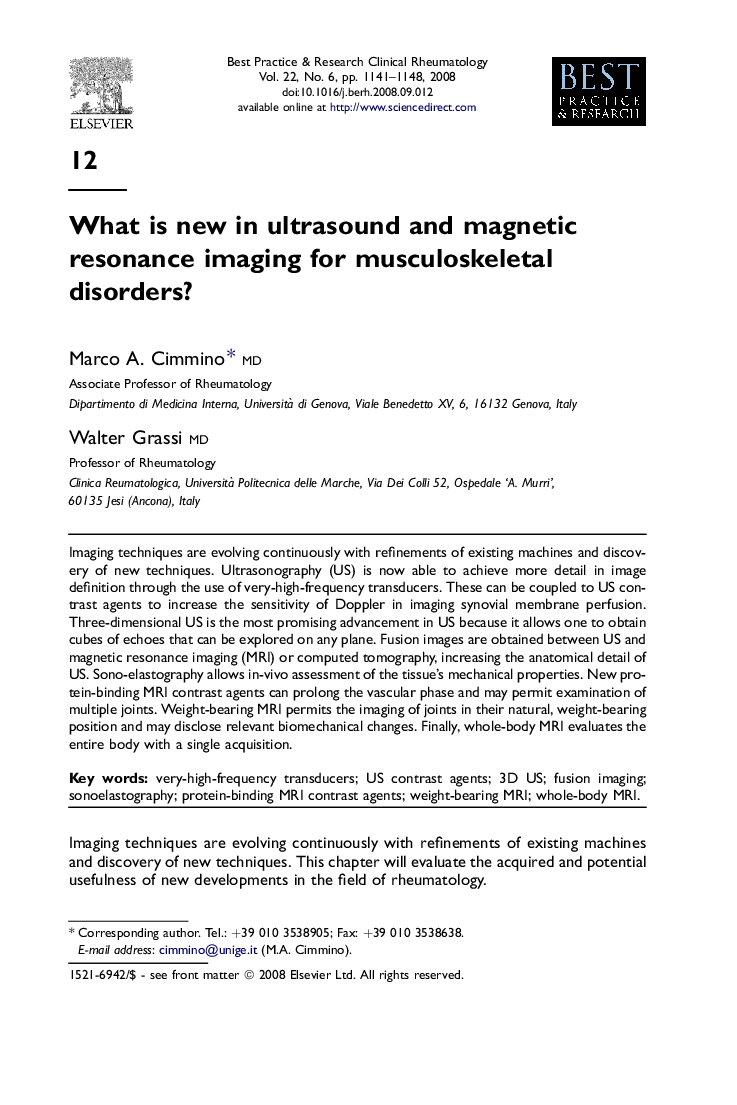| Article ID | Journal | Published Year | Pages | File Type |
|---|---|---|---|---|
| 3343378 | Best Practice & Research Clinical Rheumatology | 2008 | 8 Pages |
Imaging techniques are evolving continuously with refinements of existing machines and discovery of new techniques. Ultrasonography (US) is now able to achieve more detail in image definition through the use of very-high-frequency transducers. These can be coupled to US contrast agents to increase the sensitivity of Doppler in imaging synovial membrane perfusion. Three-dimensional US is the most promising advancement in US because it allows one to obtain cubes of echoes that can be explored on any plane. Fusion images are obtained between US and magnetic resonance imaging (MRI) or computed tomography, increasing the anatomical detail of US. Sono-elastography allows in-vivo assessment of the tissue's mechanical properties. New protein-binding MRI contrast agents can prolong the vascular phase and may permit examination of multiple joints. Weight-bearing MRI permits the imaging of joints in their natural, weight-bearing position and may disclose relevant biomechanical changes. Finally, whole-body MRI evaluates the entire body with a single acquisition.
